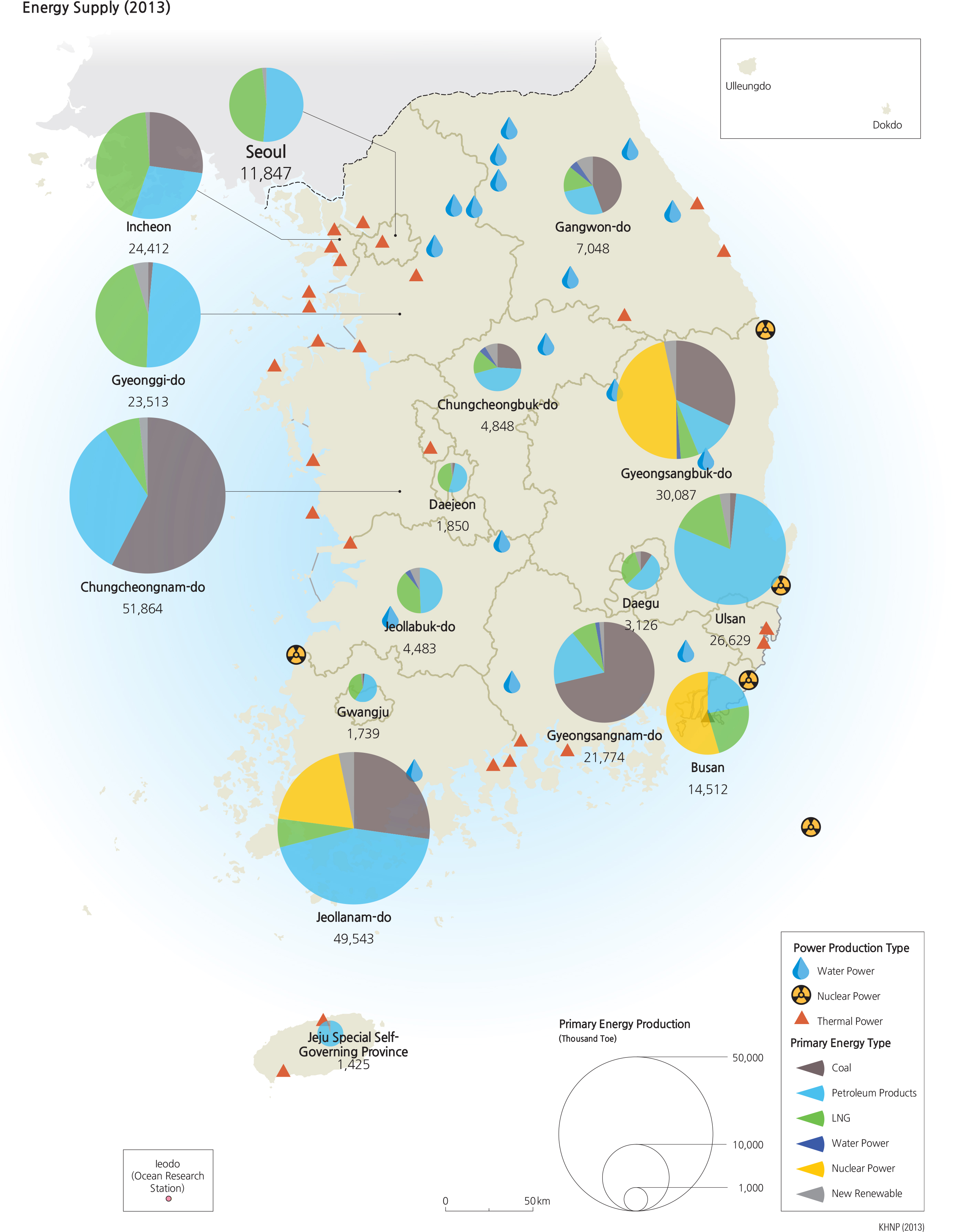for Children
To power its diverse economy Korea relies on energy generation from a variety of sources. Transportation generally relies on petroleum products, such as gasoline and diesel, for an energy source. Commercial and industrial buildings, as well as residences and institutional buildings, such as schools, largely depend on electricity for their energy. Thermal sources of electricity are the result of combustion (burning) of a fuel that heats water to run steam generators. Examples include coal liquefied natural gas (LNG). Coal combustion has some environmental problems and puts some pollutants into the air. LNG burns more cleanly, but there are also environmental problems associated with the collection of natural gas. These thermal power sources, fairly evenly distributed across the country, add carbon dioxide to the atmosphere. Korea has 23 nuclear power plants concentrated in three areas:
|


